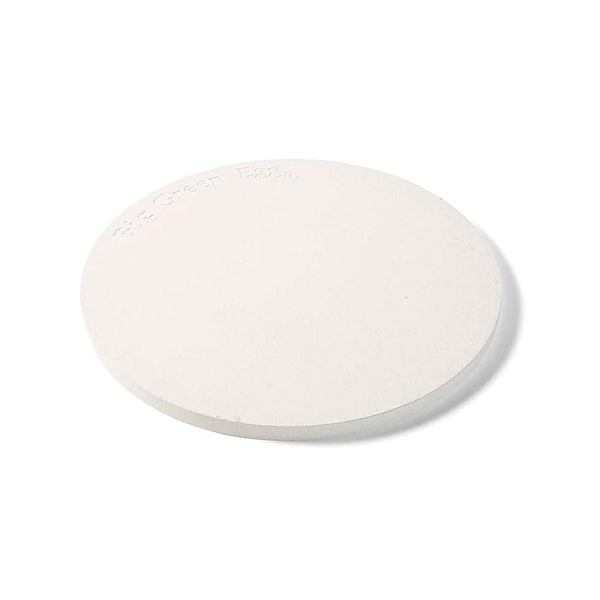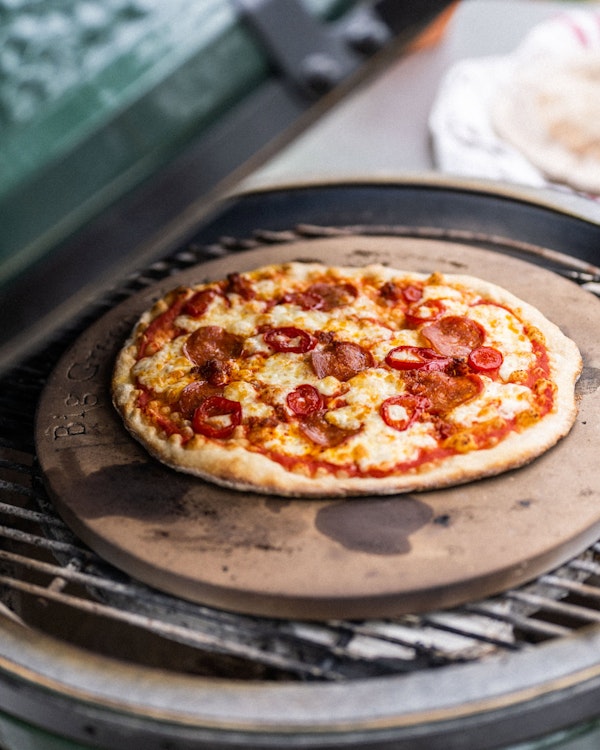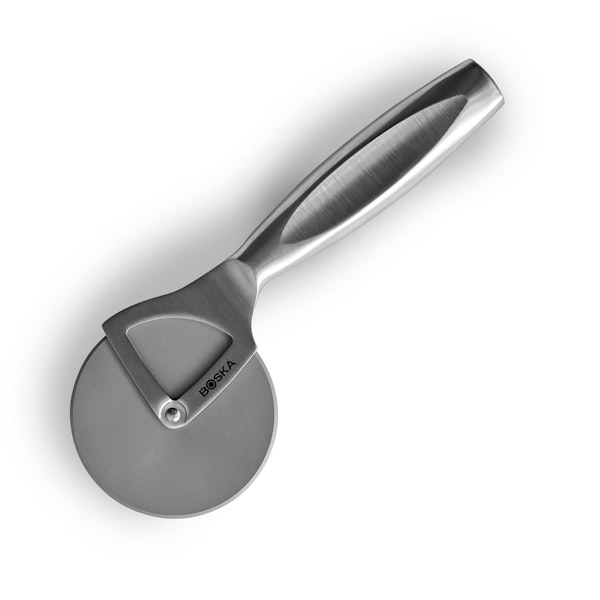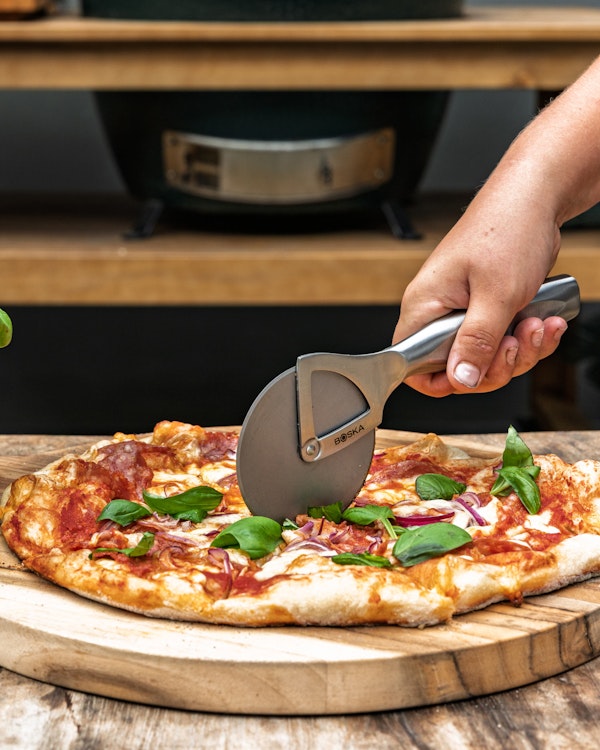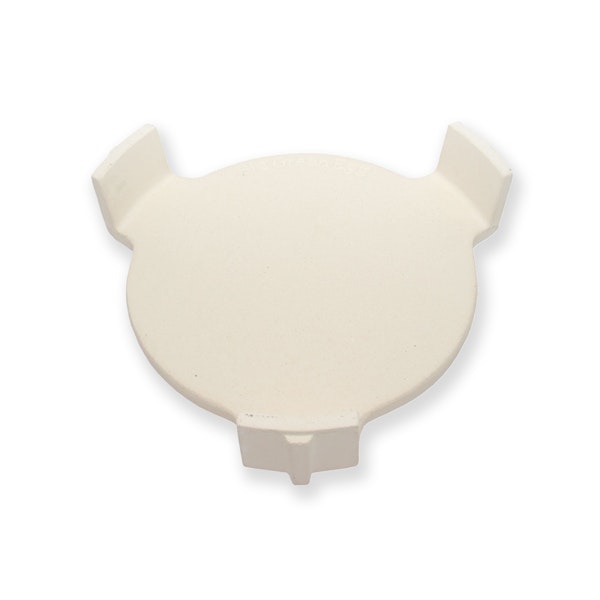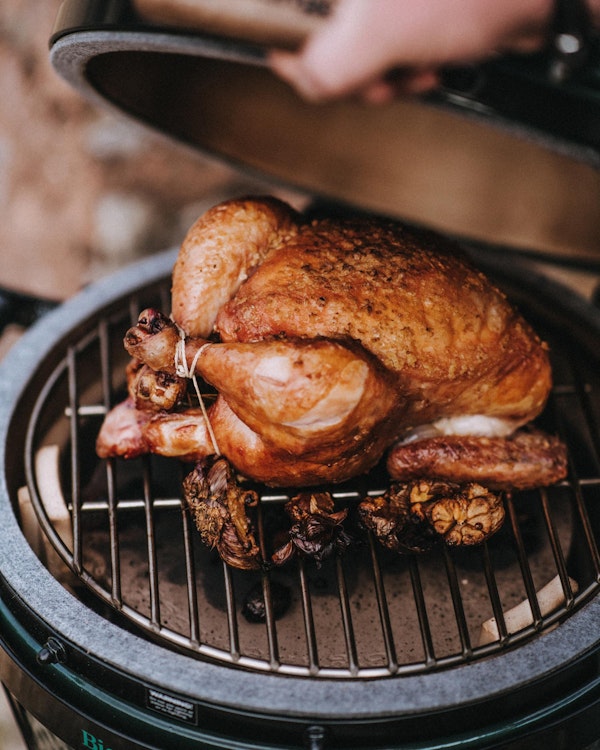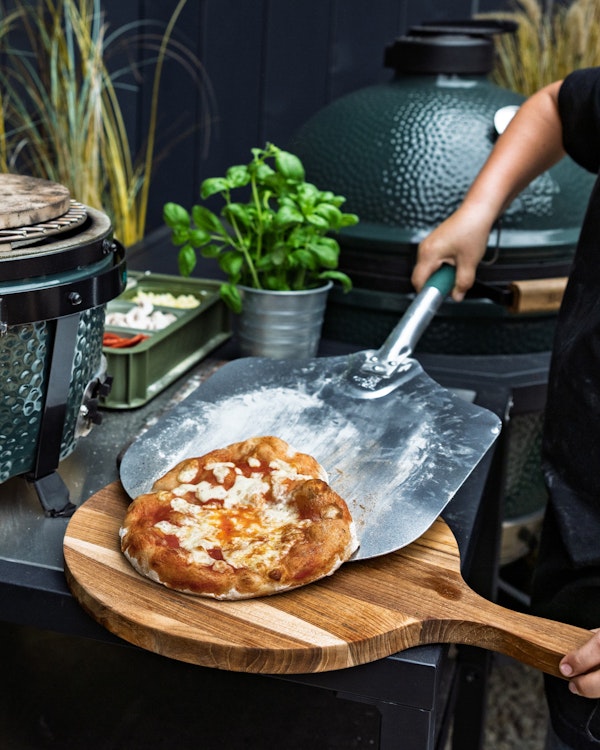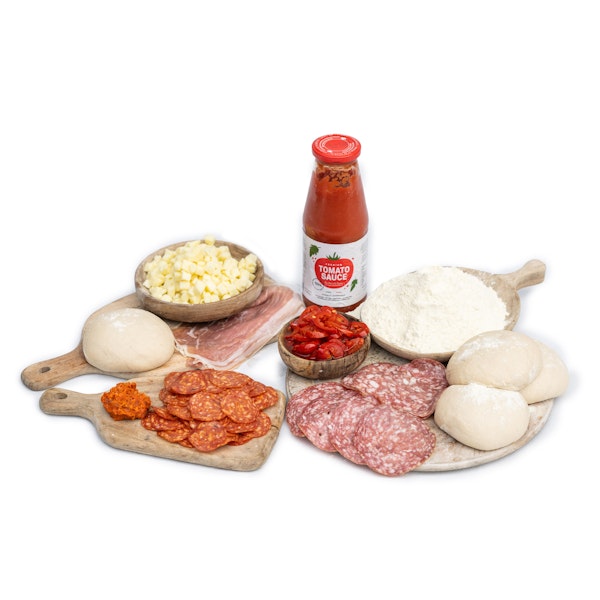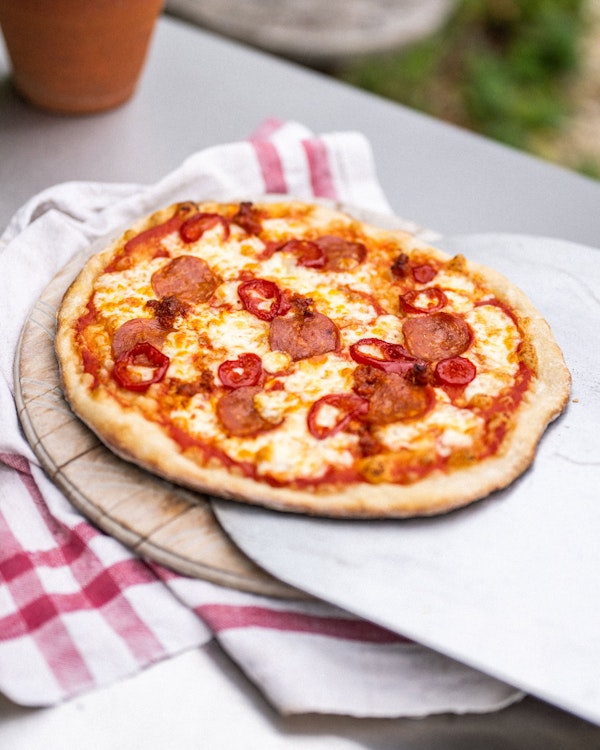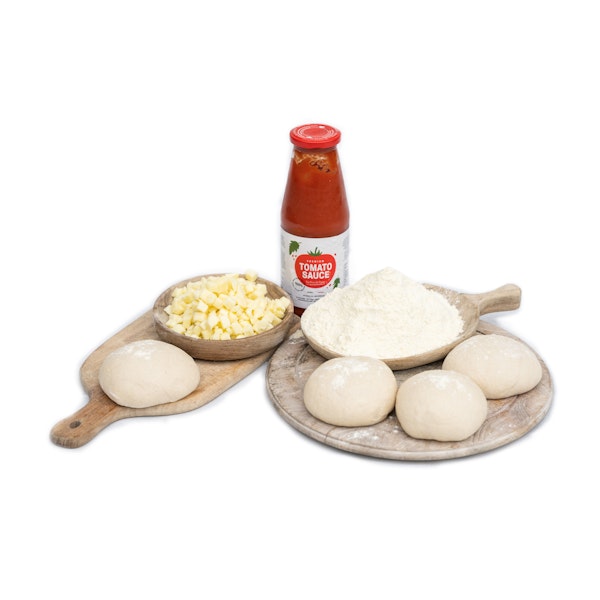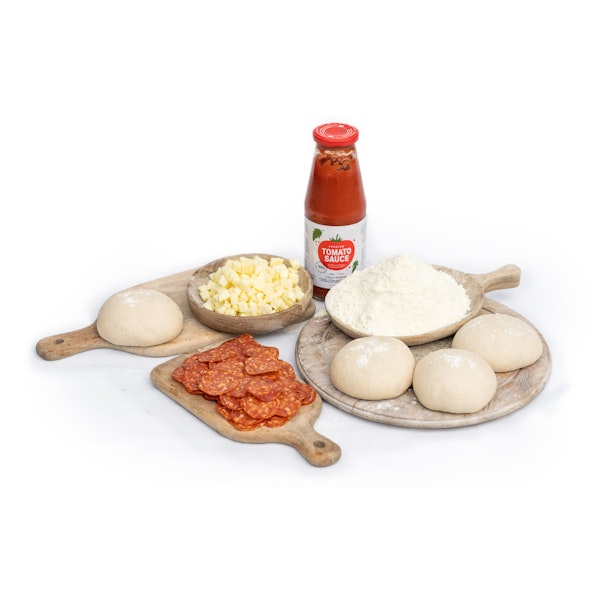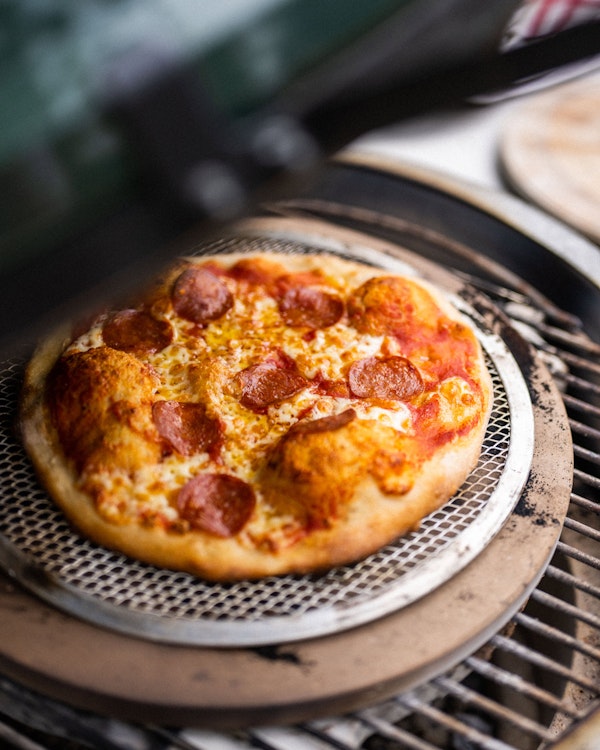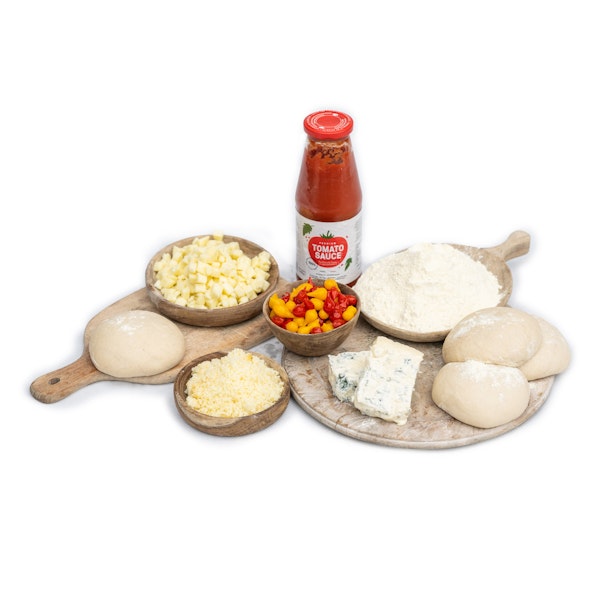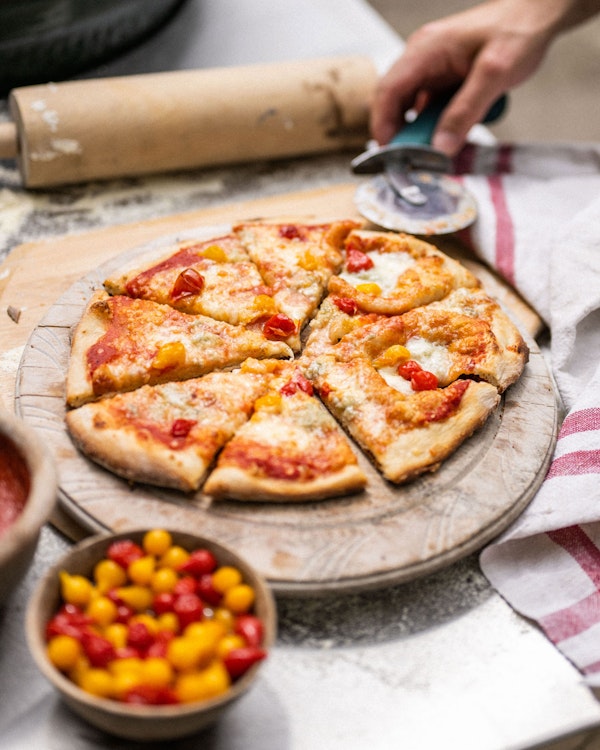Overview
Brothers Thom and James Elliot are the masterminds behind Pizza Pilgrims, the chain of pizzerias in London and Oxford acclaimed for its Neapolitan pizzas. They’ve been kind enough to share their classic Margherita recipe.
The same basic recipe can provide the basis for more elaborate topping combinations: cured meats, seafood, vegetables, different cheeses. Whatever toppings you go for, take care not to overload your pizza. If you’re looking for an even cook, less is more.
Make the dough
Tip a mountain of flour onto a clean work surface and use your fist to make a well in the centre, exposing the countertop below.
Crumble the yeast into the tepid water, mix to dissolve, then pour a third into the flour crater. Use your fingertips to mix the liquid, slowly bringing the flour in from the sides. Keep dragging more flour into the mix until it reaches the consistency of porridge, then add a bit more water. Don’t let mixture get too thick; if it starts to form a dough too soon it becomes difficult to incorporate the rest of the water. Continue this process until all the water is used up.
Sprinkle the salt over the mixture while it’s wet to ensure it dissolves. Use both hands to push the remaining flour from the outside into the middle. Fold and press until all the flour is absorbed and a dough comes together. Work the gluten by kneading the dough, using the heel of one hand to stretch the dough and roll it back up, while the other hand acts as an anchor. Continue for about 8 minutes until the dough is smooth, glossy, tight and elastic.
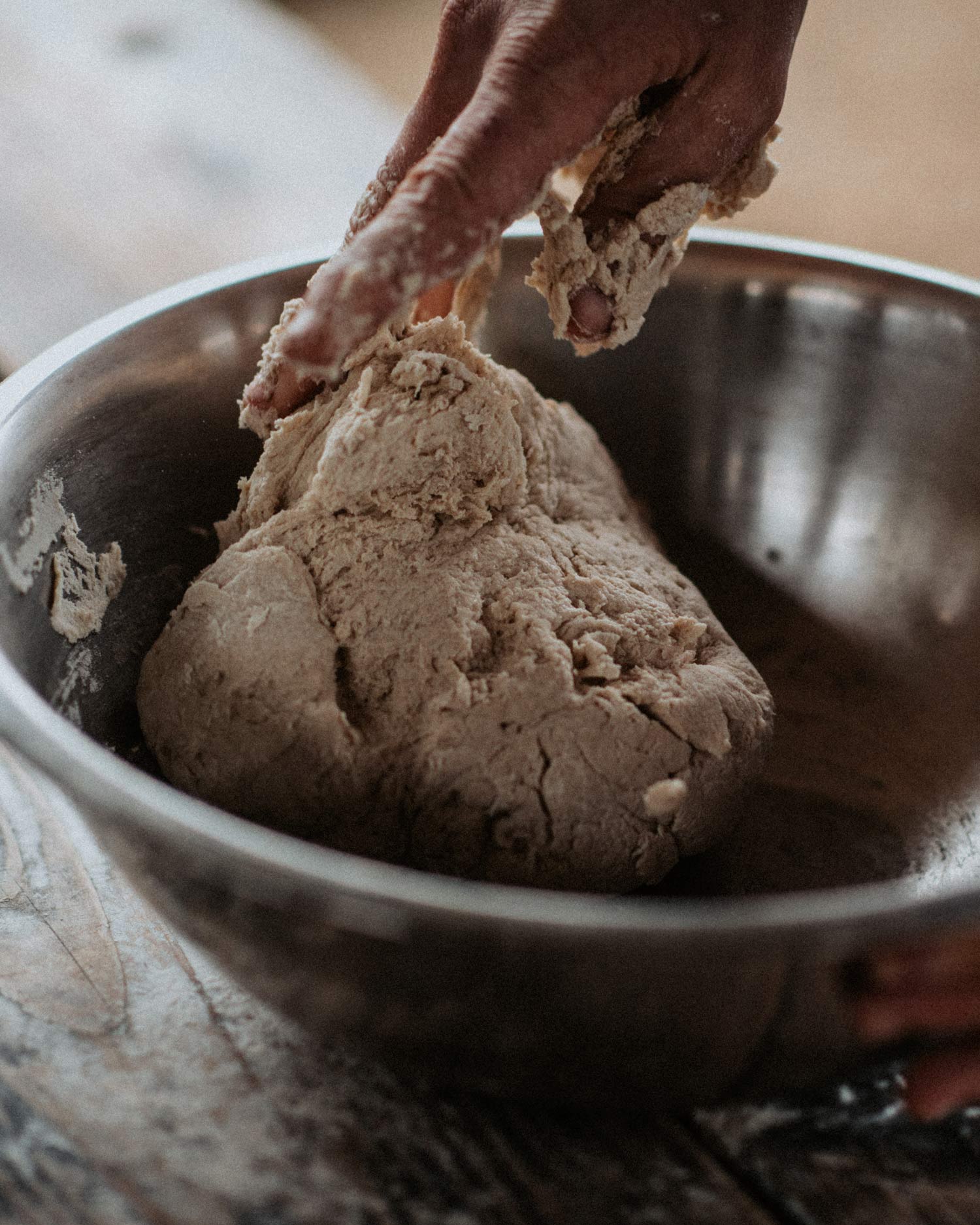
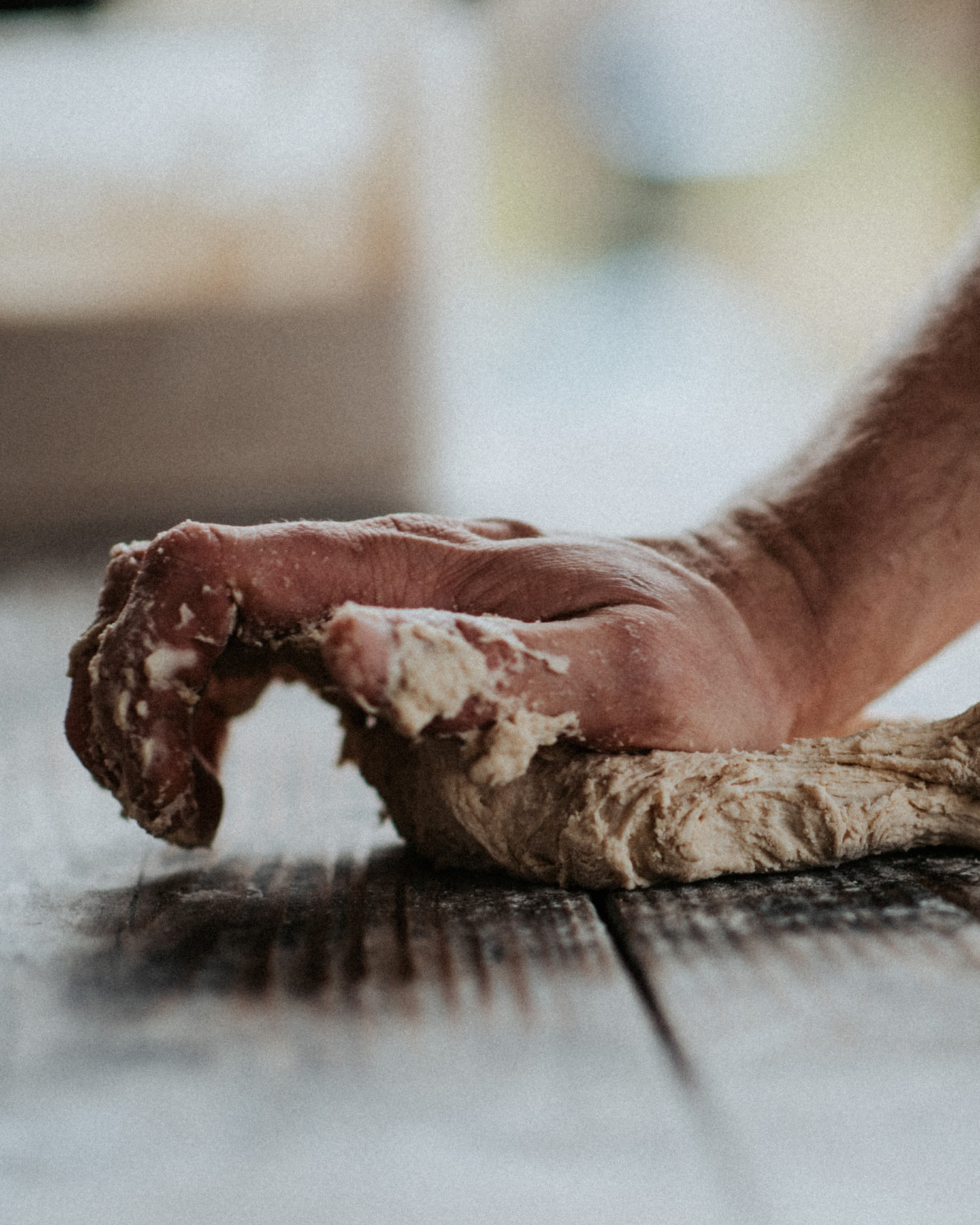
Leave the dough for 10 minutes, covered with a damp cloth. Divide into individual balls weighing about 230g each. Place them on a tray 3cm apart. Cover and leave at room temperature for approximately 6 hours to roughly double in size, then store in the fridge overnight. The next day, remove from the fridge for 1-2 hours before you plan to cook.
Set up your EGG
Set up your EGG for indirect cooking, with the ConvEGGtor in a legs-down position, with a Baking Stone sitting on top of the Stainless Steel Grid. The target temperature is 300˚C.
Shape the dough
Dust your work surface with semolina flour. Using your fingertips, press out the dough ball firmly, starting at the centre and working out to the edge. Ensure you leave 1cm around the rim untouched. Turn the dough ball over and repeat the pressing out process on the other side. Move quickly and add a litle more flour as you go along to prevent the dough from sticking.
Take the flattened dough ball on the back of your hands, with the weight on your knuckles rather than your fingertips. Stretch the dough out as far as you can without tearing it, then turn the dough 90 degrees and repeat. Do this a few times.
You should now have a disc of dough around 30cm in diameter, consistently thin but with a slightly thicker rim. Transfer to a well-floured Aluminium Pizza Peel.
Add the toppings
Sprinkle some parmesan on the pizza base then spread the passata lightly over the top, leaving a good rim around the edge. Tear the mozzarella into small chunks and distribute evenly. Finally rip up some basil leaves and sprinkle on top.
Bake the pizza
Quickly but carefully transfer the pizza from the peel to the Baking Stone, then close the Dome. After a few minutes, check that the cheese is melting and the dough is blistering. Close the EGG again if it looks like it needs longer. It should take about 6 minutes for the pizza to cook, during which time you should start preparing the next one.
Using the peel, remove the pizza from the EGG. Divide into even slices with a Pizza Wheel and eat straight away.
Top tips
If you over-stretch your dough and it gets too thin, you can sometimes end up with small holes in your pizza base, but all is not lost – just squeeze these gently back together before you put any toppings on.
To avoid a soggy bottom, reduce your passata right down. We’d also recommend leaving the torn-up mozzarella out for a while to reduce its moisture before it's added to your base.
One simple yet effective topping is ’nduja, a spreadable Calabrian spicy sausage with a smoky flavour that brings great depth to any pizza. You'll find that a little goes a long way.

